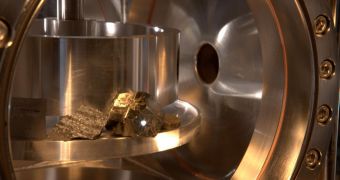Experts at the NASA Jet Propulsion Laboratory, who are in charge of building the next NASA rover that will go on Mars, have just received one of the key elements of the new robot – the ChemCam.
This is an instrument of a class that has never flown to space before. It will go on the Mars Science Laboratory rover, which is now called Curiosity.
It was constructed by experts at the US Department of Energy's (DOE) Los Alamos National Laboratory (LANL), who have just delivered it to the JPL, in Pasadena, California.
The laser instrument will play a critical role in the way Curiosity explores its surroundings, considering that it will allow for long-distance chemical analysis to be carried out from tens of feet away.
According to the team that conducted the experiments, the rover will be capable of zapping rocks up to 7 meters (23 feet) away, and gain numerous details about their internal structure.
The way ChemCam will do this is by firing up short pulses of intense laser light onto its targets. The investigations technique is called laser-induced breakdown spectroscopy (LIBS).
After vaporizing a small portion of the rock with the laser, an onboard spectral analyzer looks at the vapors, and determines their spectral emissions.
Each individual chemical has its own spectral “signature,” particular wavelengths at which is shines. Spectrography is therefore used heavily in space missions, including orbiters and telescopes.
“ChemCam will act as a geochemical observatory, providing composition data to understand if Mars was, is, or will be a habitable world,” says the French lead for the instrument, Sylvestre Maurice.
“It will also help the rover team pick the most promising targets on which to use the rover’s other instruments,” he goes on to say.
“We brought together a lot of new ideas to make this instrument a reality. It has been exciting to see this invention come together,” explains LANL expert Roger Wiens, who was the principal investigator for the new instrument.
This instrument will be mounted atop Curiosity's mast-like structure, alongside its panoramic cameras. The MSL will feature groundbreaking capabilities, including interior ovens designed to burn samples.
Its robotic arm will also carry numerous instruments, and will also be able to prepare samples for analysis by the large variety of other instruments the rover will have.
The MSL will be the first rover designed specifically to identify traces of organic molecules on Mars.
Description: An explanation of how the ChemCam instrument works Credit: Los Alamos National Laboratory

 14 DAY TRIAL //
14 DAY TRIAL //